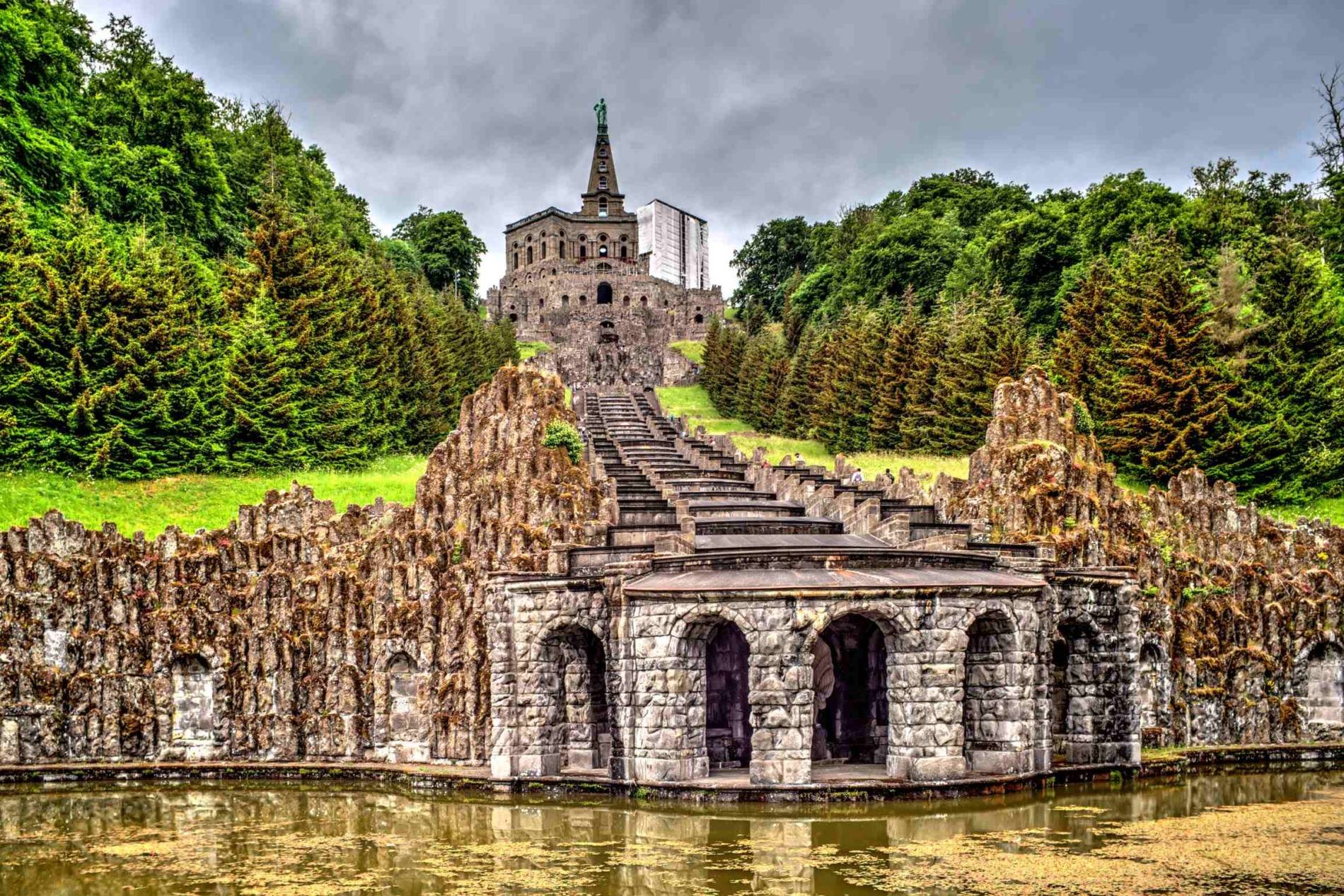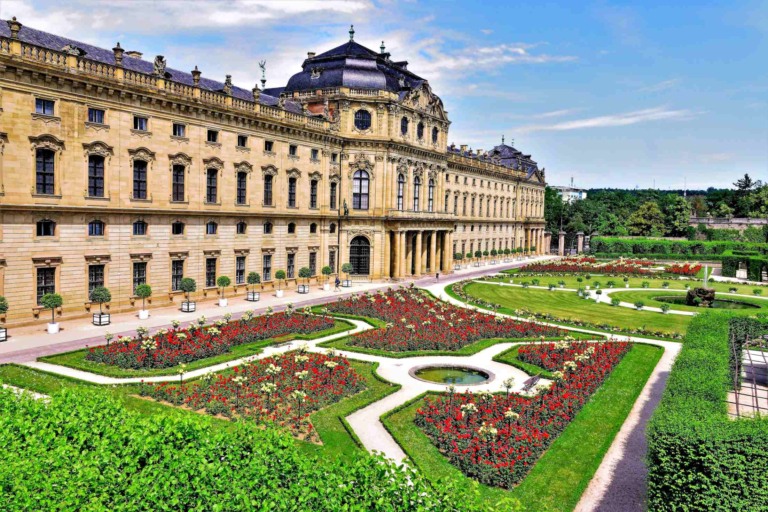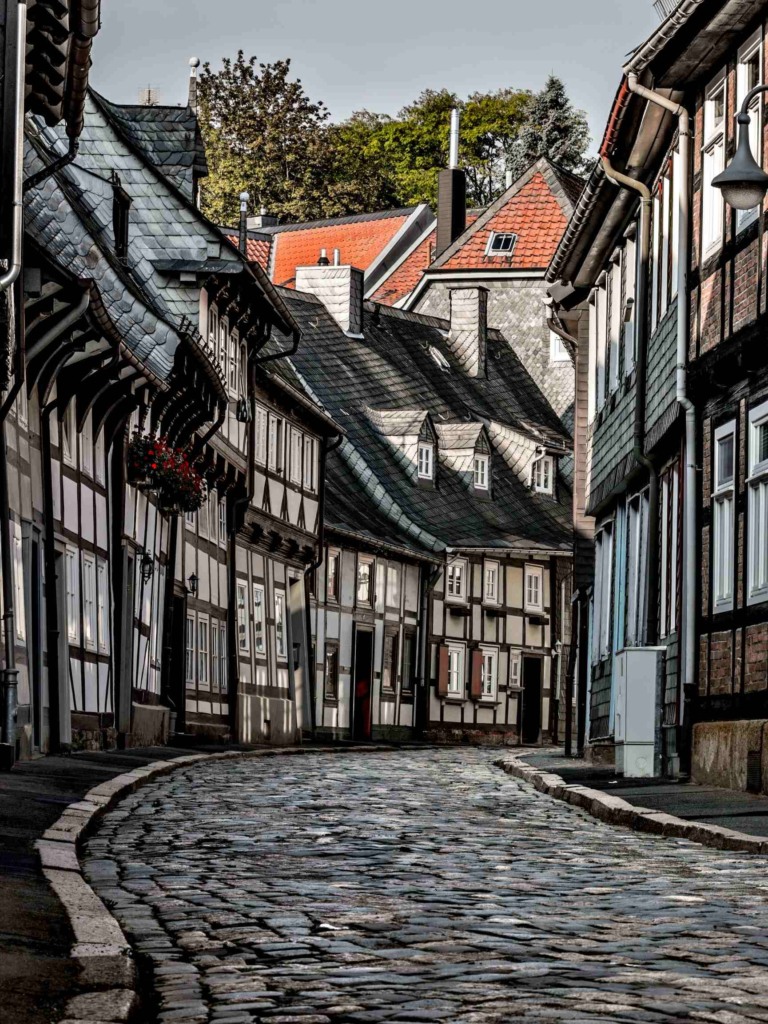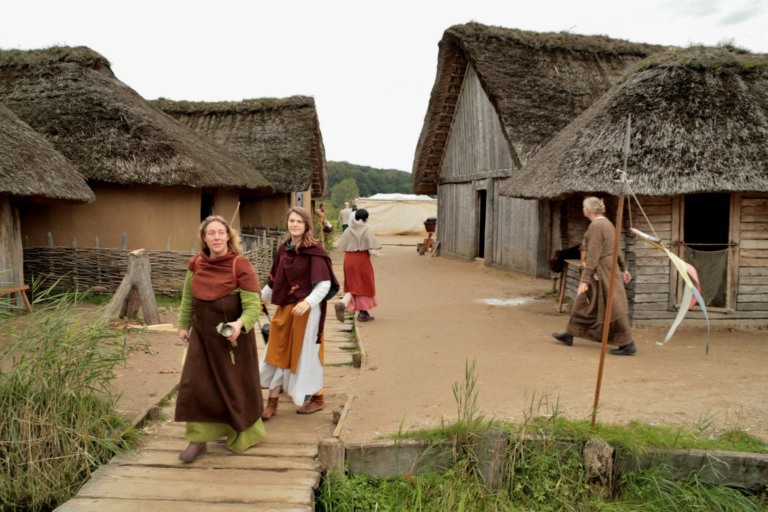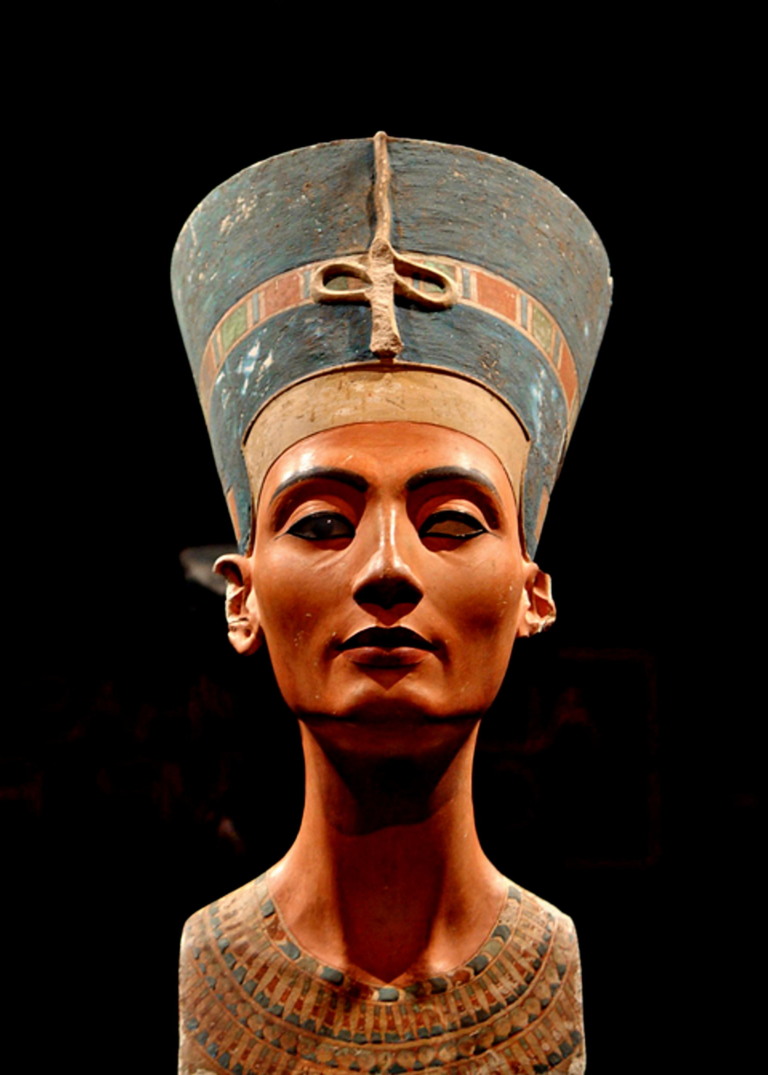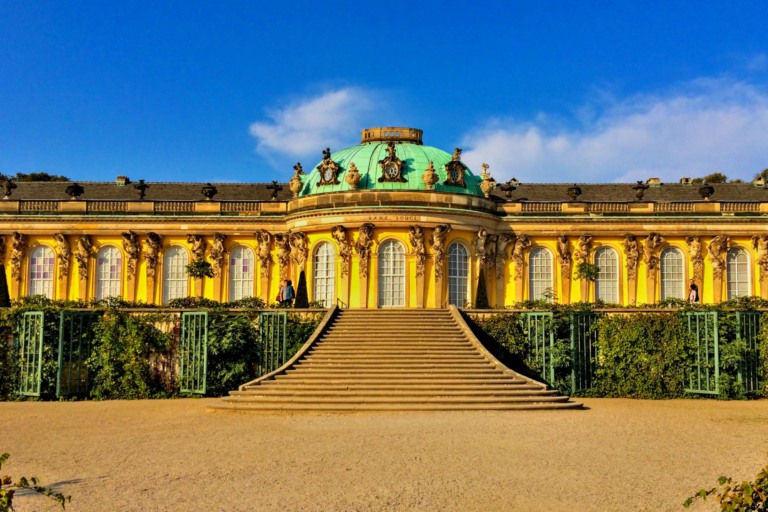Bergpark Wilhelmshöhe is a long hill that slopes down, and at the top stands a huge statue of Hercules. Landgrave Carl of Hesse-Kassel started the large water shows at Wilhelmshöhe in 1689. They were built along an east-west line, and until the early 1900s, they kept getting better. Behind the Hercules Monument, reservoirs and paths bring water to a complex system of hydro-pneumatic devices that feed the site’s 350-meter-long Grand Cascade, big Baroque water theater, grotto, and fountains.
Bergpark Wilhelmshöhe
Discover a breathtaking landscape of channels and waterways that wind across the axis, nourishing a series of dramatic waterfalls and wild rapids. Witness the awe-inspiring Grand Fountain, which shoots up an impressive 50 meters high, resembling a magnificent geyser. Take in the tranquil beauty of the lake and secluded ponds that bring life to the Romantic Garden, originally built by Carl’s great-grandson, Elector Wilhelm I, in the 18th century.
The huge park and its waterworks, as well as the huge figure of Hercules, are all great examples of the ideals of absolute royalty, and the whole thing is a great example of the beauty of the Baroque and Romantic eras. Park with scenery Germany’s Bergpark Wilhelmshöhe is in the city of Kassel. In the northern state of Hesse, Bad Wilhelmshöhe is a part of the city of Kassel. It is west of the city center and close to the foot of the Habichtswald hills.
History of Bergpark Wilhelmshöhe
It is also known for the high-speed train stop at Kassel-Wilhelmshöhe, which is on the line from Hanover to Würzburg. The park is 2.4 square kilometers (590 acres) big, which makes it the largest hillside park in Europe and the second largest hillside park in the world. About 150 years were needed to finish it. Anyone can go to the park now.
Bergpark Wilhelmshöhe has been a UNESCO World Heritage Site since 2013 because of its beautiful Baroque design and unique fountains and water features. It was first built in the Baroque style of the giardino all’italiana and the French formal garden, with water features that went downhill in waterfalls to Schloss Wilhelmshöhe. It later became an English flower garden. In 1143, canons from Mainz founded the Weißenstein monastery.
It used to be where Schloss Wilhelmshohe is now. The monastery fell apart during the Protestant Reformation. Landgrave Philip I of Hesse made a shooting lodge out of the remaining buildings. Between 1606 and 1610, his grandson Maurice of Hesse-Kassel rebuilt most of them. Landgrave The Bergpark was turned into a Baroque park by Charles I of Hesse-Kassel.
Giovanni Francesco Guerniero, an Italian builder, built the Hercules monument and the giant cascades in 1701. In 1785, Wilhelm (William) IX, who was the Landgrave of Hesse, began a big expansion of the park. The next year, his builder, Simon Louis du Ry, built him the Neoclassical palace Schloss Wilhelmshöhe. At the same time, the English garden style took over from the French Baroque style.
Bergpark Wilhelmshöhe Kassel Germany
The new French satellite state, the Kingdom of Westphalia, made Kassel its capital. Jérôme Bonaparte, Napoleon’s brother, was in charge of this state. He held court in the Wilhelmshöhe house, which was called Napoleonshöhe until 1813, when Napoleon was beaten and the electorate was brought back. Count Heinrich von Blumenthal was the king’s top advisor and the leader of Napoleonshöhe.
In 1826, the Grosser Wasserfall, or Great Waterfall, was built in the Bergpark Wilhelmshöhe at the request of William II, Elector of Hesse. In 1866, the Kingdom of Prussia took over the principality because it had stood with Austria in the war between Austria and Prussia for control of Germany. The Prussian government combined the states of Nassau, Frankfurt, and Hesse-Kassel to make the new state of Hesse-Nassau.
Kassel was no longer the home of a prince, and the family that built the park no longer lived there. In 1870, after the Battle of Sedan, Napoleon III was taken as a prisoner to Schloss Wilhelmshöhe before he went into exile in Britain. Wilhelm II went to school in Kassel, so in 1899, he chose Wilhelmshöhe as his summer home.
The castle and park were the center of European affairs for the next 20 years. Allied bombs damaged Schloss Wilhelmshöhe during World War II. Between 1968 and 1974, it was fixed up and turned into an art museum. It has a collection of Old Master paintings, a collection of Greek and Roman objects, and a collection of wallpaper. The paintings in the collection are mostly by German, Italian, French, and Spanish artists from the 16th and 17th centuries.
It has more Rembrandts than any other museum in Germany. Saskia by Rembrandt and The Man with the Slouch Hat by Frans Hals are two of the most famous. In the 21st century, there have been a lot of repairs to the Hercules monument and waterfalls, which are still going on. There is still a lot of scaffolding around the statue.
